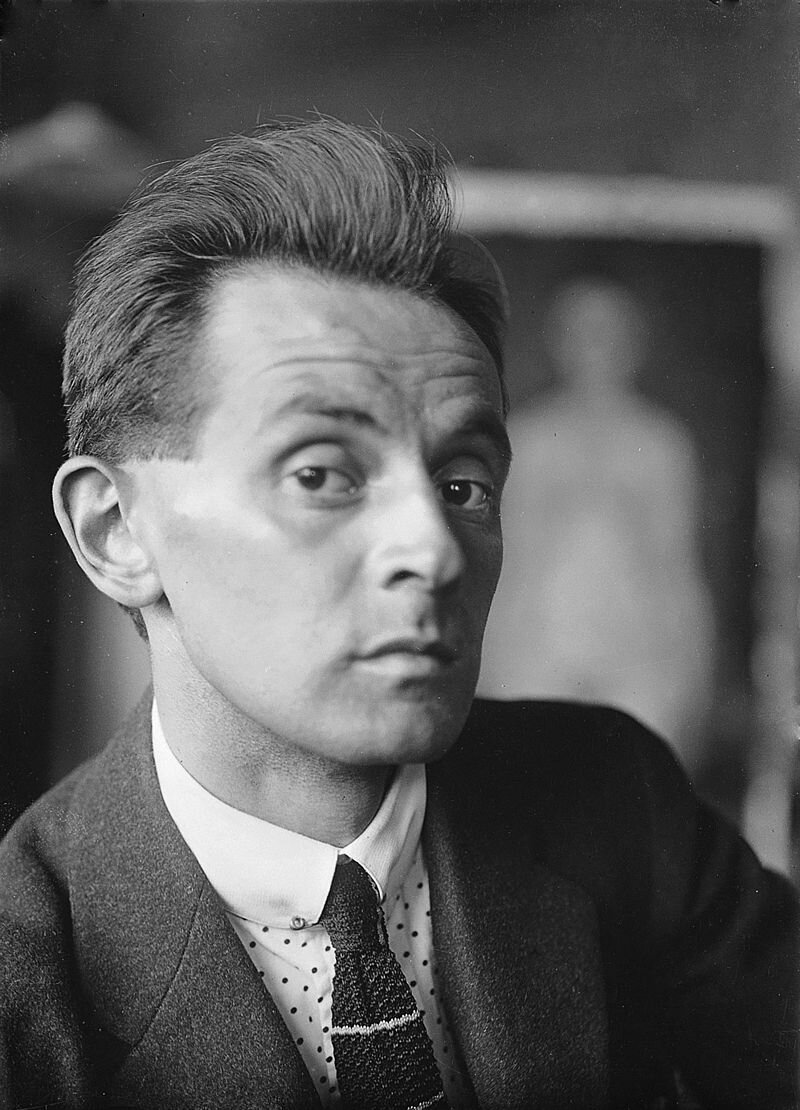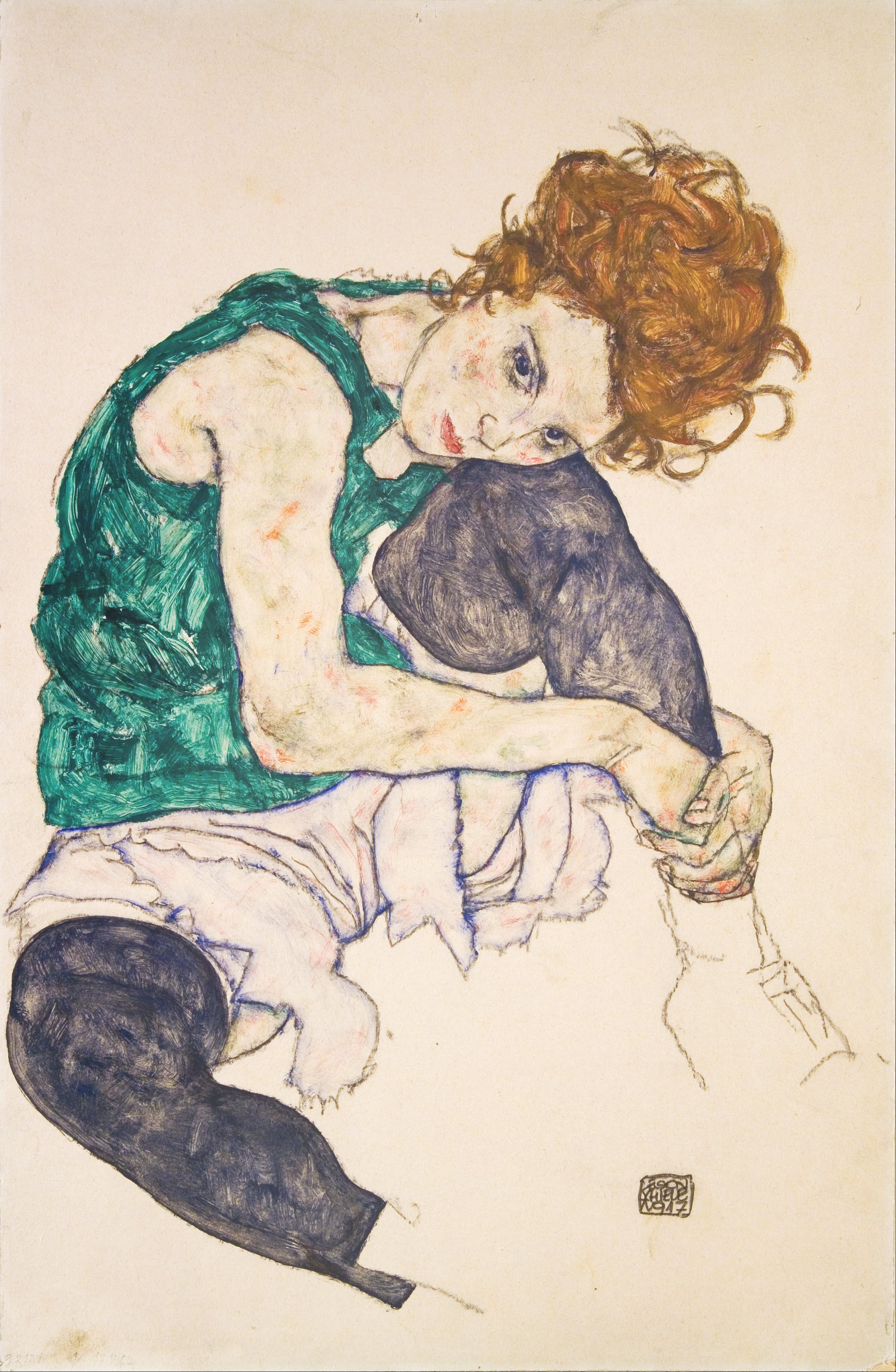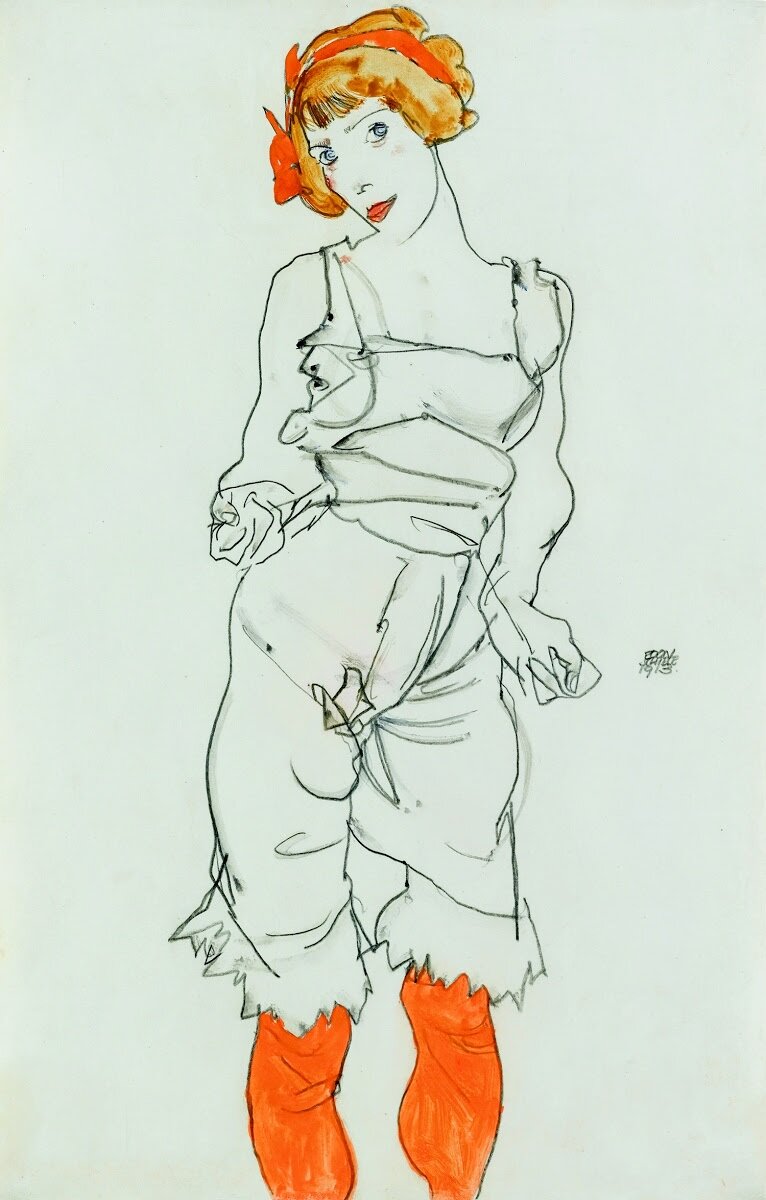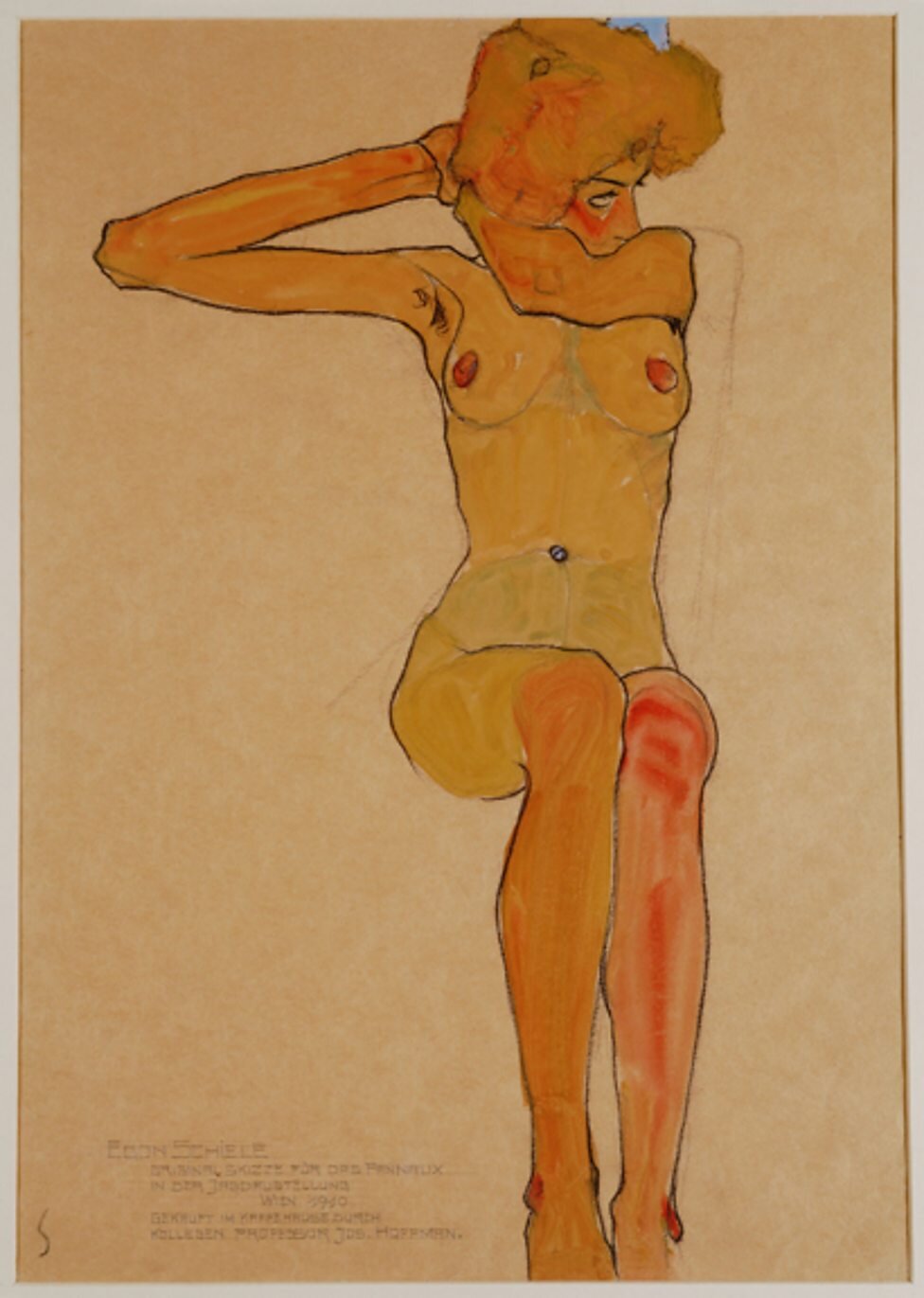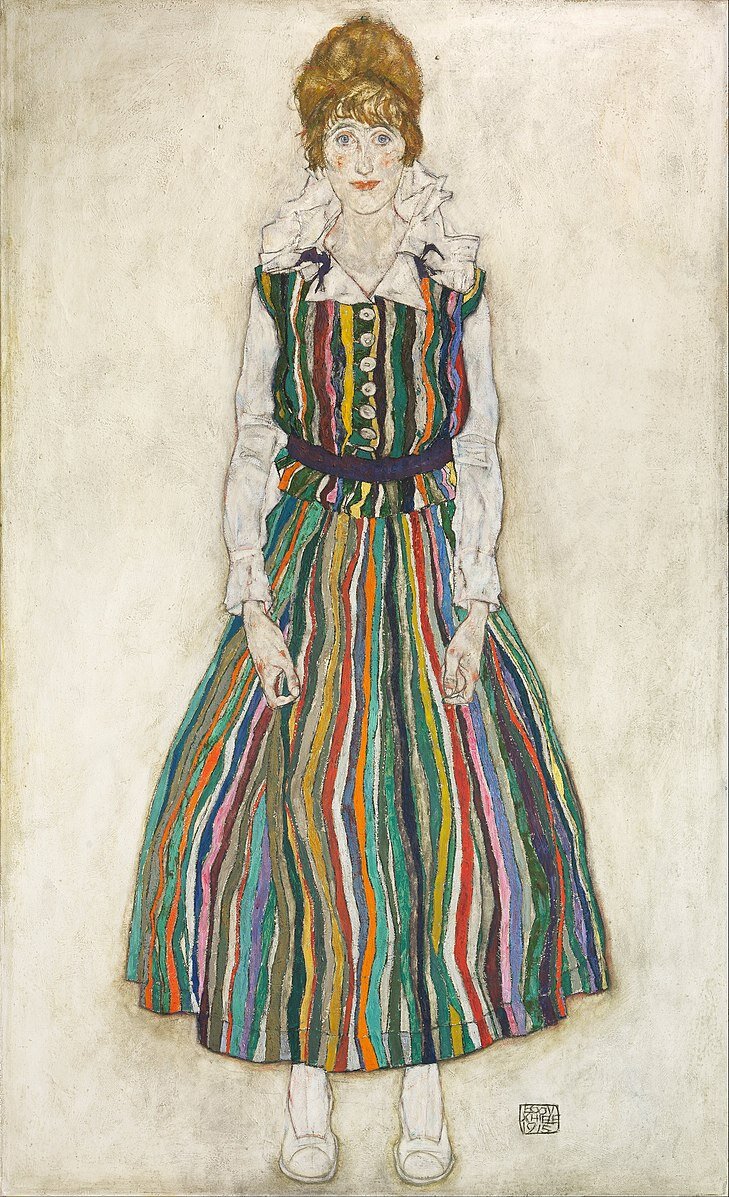Sophie Haydock on the women who inspired Egon Schiele’s art
Journalist and debut author Sophie Haydock is the one-woman-show behind the Instagram account @egonschieleswomen, which has amassed over 100,000 followers since its creation in 2015. We spoke to Sophie about how the Austrian artist Egon Schiele inspired her novel, what researching a historical fiction book was like, and how a spontaneous decision changed the course of her life forever. Sophie’s debut novel, The Flames, will be released by Doubleday in February 2022, and follows the lives of the women who inspired the art.
Can you tell us a little about Egon Schiele, and how he inspired your novel?
It was mid-January, in 2015, and a friend of mine – who I’d not seen for a long time – messaged to say she’d be visiting London at the weekend, and did I want to meet up and go to an exhibition together? I was busy, rushing around and almost made my excuses, but I knew I wanted to catch up with her, and I always loved seeing art, so sure, why not?
My friend suggested meeting at the Courtauld Institute of Art, which had an exhibition called The Radical Nude, dedicated to the work of a long-dead Austrian artist I’d heard of but had never paid much attention to before – Egon Schiele. I didn’t know, as I waited at the entrance, that stepping inside the gallery that day would change the course of my life.
It would lead to the publication of my debut novel. I’d go on to write it in the dark hours before work, win a competition for its opening chapters, pour my heart into the manuscript as I refined and edited it, be offered representation by Juliet Mushens, who, in turn, negotiated a major pre-empt with my ideal publishers, Doubleday, who, to my delight, will publish The Flames in February 2022. I couldn’t have guessed at any of that.
There was a line at the end of the exhibition that I remember vividly (look away if you don’t want any spoilers) – “Egon Schiele died, age 28, three days after his wife, Edith Harms, who was six months pregnant with their first child.” It knocked the breath out of me. I knew instantly that I’d write about Edith. I wanted to know all about that young woman, to tell her story, to find out what moved and motivated her, and how she lived and died.
I went home and googled Edith Harms and soon found three other women who modelled for the artist, all of whom had very strong identities and stories – their lives collided with Egon Schiele’s in the most exceptional ways. I knew I had the beginnings of a novel. In my career as a journalist, I’ve always been drawn to telling stories that might otherwise go unheard. And suddenly, here were four women who are seen (sometimes very explicitly) but who’d never been heard. I wanted to shine a light on their untold stories, their secret selves.
I sometimes wonder what these past years of my life would have looked like if my friend hadn’t been coming to London that weekend. Who would I have become if I’d not gone that day or failed to be curious about the haunting gazes looking back at me from Egon Schiele’s powerful artworks? What else would I have ended up writing about, I wonder?
How much research did you have to do to prepare to write the book?
Deciding to write about an artist who lived in Austria more than 100 years ago opened the door to a huge amount of research. Luckily, I knew where to begin with tracking down hard-to-reach information, and I was confident contacting people who are experts in Egon Schiele and his artwork and asking if they wouldn’t mind being interviewed.
I also made two trips to Vienna – the first to visit all the museums, eat sachertorte, soak up the atmosphere of Austria’s capital, and I tried to imagine what it would have been like at the turn of the 20th century. More recently, I went back on a week-long solo research trip, which was a huge adventure. I met with experts, guides, gallery owners, and used my journalistic skills to find out everything I could about Schiele and his models. I ended up in overgrown graveyards, doing a tour of a contraception museum (to find out how these things were dealt with in the past), at a railway station in the middle of the Austrian countryside (where Egon was born and grew up, forming an intense bond with his little sister, Gertrude), and sipping Czech beer on a hot day in the fairy-tale setting of Cesky Krumlov, watching the fast-flowing Vlata river.
Of course, I also read all the books I could, viewed any documentaries, spoke to Schiele scholars for features I wrote for the RA magazine and Sotheby’s, went to the British Library and tracked down specialists in things like “ambulances in Vienna in the 1960s”. With historical fiction, there’s so much research, and in the end most of it amounts to only a sentence or so.
Did you have a favourite of the women when you were writing the novel?
I’ve written about the four main models in Egon Schiele’s life – his fiery little sister Gertrude, his sensual and independent muse and lover, Vally Neuzil, and the well-to-do sisters he meets in Hietzing, Vienna – Adele and Edith Harms – who vie for his affections.
My first connection was to Edith, and I feel tenderly towards her – she’s often overlooked in the Schiele story, I believe, as people who know of the dynamics typically feel that Vally was treated badly, when Egon proposed to another woman, and that he only married Edith because she was a good girl from a good family, of a higher social standing. I really wanted to redress the balance, to show her as a more complicated character, who fell in love and executed her own schemes to marry the handsome artist who lived across the street.
But as I was writing the novel, I came to love Adele - Edith’s sister, Schiele’s sister-in-law. I unearthed new information about her that captured my imagination. In The Flames, she is stubborn, strong-minded, brimming with self-confidence. But of course, there comes a fall, and she pays a price for her youthful recklessness. I adore Adele for her failures.
Can you tell us more about Egon Schiele’s career – how was he viewed in his lifetime vs how he is viewed now?
Egon Schiele made some of his most powerful artworks as a teenager and in his early twenties. He was prolific during his lifetime, creating thousands of drawings, watercolours and oil paintings. He took art in a new direction, having been inspired by his mentor, Gustav Klimt – a radical and challenging direction that still resonates today.
Schiele died very young, just as his star was rising and he was beginning to enjoy the success that had eluded him throughout his life – and it’s poignant to consider what he could have achieved if he’d lived and made art for another fifty years. He’s still hugely popular, perhaps because his art was so ahead of its time. He challenged representations of gender and gave women power through his paintings, something that had rarely been done before. Of course, he too was a flawed character, and I explore his controversies in The Flames.
Do you have a favourite of his paintings?
The first painting that really struck me at the Courtauld was a stunning watercolour – Seated Female Nude with Raised Arm (Gertrude Schiele), painted in 1910. The rosy skin tones, unusual composition, the flash of blue in her hair pulling the eye to the furthest reach of the paper. I was very surprised to discover the model was Schiele’s sister – it’s such a raw and sensual work of art. I wondered at their relationship, and the intimacy they must have shared. I wanted to know what happened to her, and how she felt about their intense bond.
Your account on Instagram where you post his artwork just amassed 100,000 followers – what was the secret to growing this following?
I began writing The Flames to share these women with the world, so it made sense for me to begin an Instagram account dedicated to the female models who posed for Egon Schiele.
I launched @egonschieleswomen in December 2015 – my first post was a painting of Edith Harms, the artist’s wife, her fingers touching in a beautifully nervous gesture. It’s an image I deeply connected with. I had an instinct that setting up the account and posting daily, building a community of followers who loved Egon Schiele and wanted to learn more about the women who posed for him, wouldn’t be something I’d regret.
I now have over 100,000 followers, and I’m very proud to have built up a huge, thriving community, full of people who admire and connect with Schiele’s artworks. The high engagement I receive every day is inspiring.
The secret to building up a following like this is to post regularly, to be authentic, and share details about the lives of Schiele and his models that people may not have known before, as well as to have genuine curiosity about those who are following me and why. It does help that Schiele’s artworks are so compelling, so modern, so haunting. And the nudity doesn't hurt, either.
To find out more, follow @egonschieleswomen on Instagram: https://www.instagram.com/egonschieleswomen/

